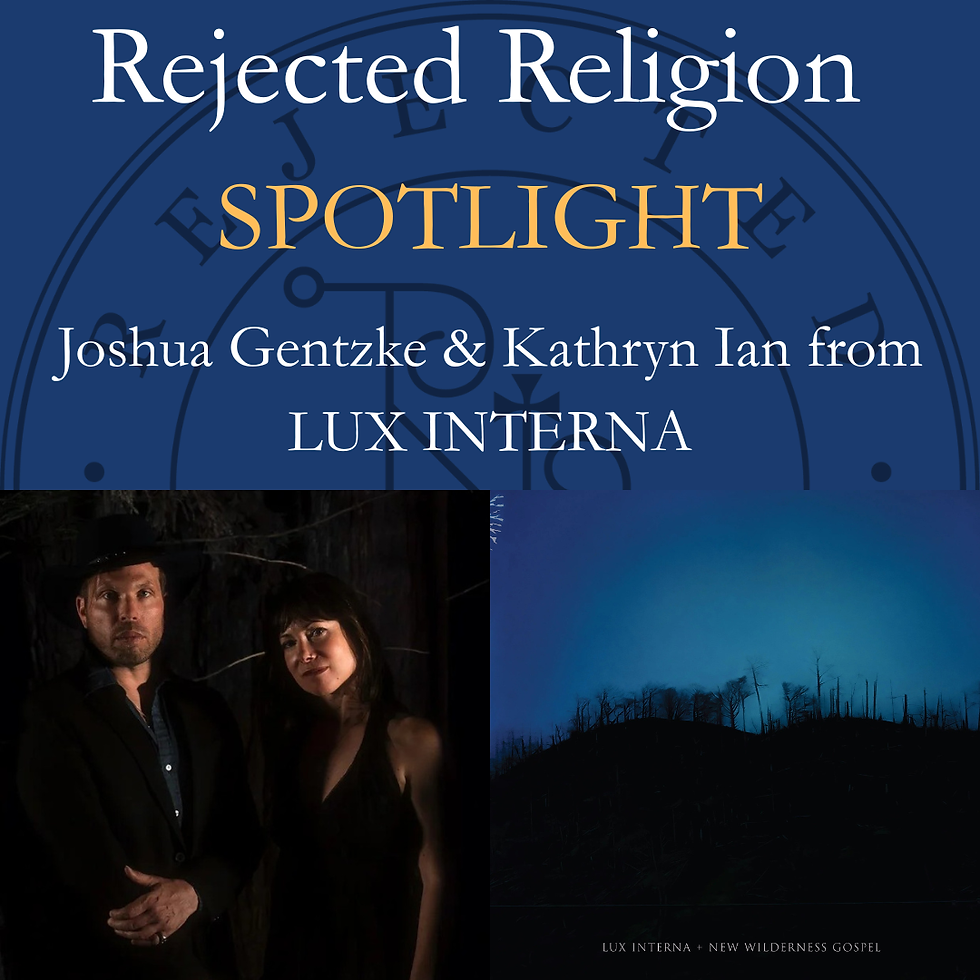Re-Cap of Two HHP Centre's Lectures
- Rejected Religion

- Apr 17, 2024
- 3 min read
I had the opportunity to attend two interesting talks given last week, and wanted to provide a quick recap of the highlights for you here.
The first talk (April 8th) was part of the Religious Studies Research Master program, called ‘Current Events.’ HHP Centre PhD candidate John MacMurphy’s presentation, “Who’s Afraid of Kabbalah Ma’asit? Divine Names and Kabbalistic Magic in Practice,” dealt with the practical application of Kabbalah with regard to divine names, how these can effectuate change in one’s environment, as well as the potential dangers of using the divine names of God.
Kabbalists believe in the power of words and speech, and use gematria (numbers associated with letters of the alphabet) to understand numerical sums for words and sentences. These numbers and sums can be seen as a sort of code, and particular numbers are relevant with regard to the divine names of God, for example, the number 72. Kabbalists can use a divine name to amplify an action or activity, an example seen in the story of the parting of the Red Sea by Moses wherein he used the 72-letter name of God. John also gave examples of visual representations of the divine names, seen in drawings and amulets.
The number 42 is also important with regard to the 42-letter name of God, that, while sometimes used in amulets for healing or protection, was also used for the acts of curses and even killing. Many tales were shared regarding the dangers of using the 42-letter name, such as the story in 2 Kings 2:23 about Elisha and the bears, or in Exodus 2: 11-15 about Moses killing Egyptians. Discussions in the Talmud center around questions such as “what makes this permissible?,” “when is it blasphemy?,” and “what if it’s not God you connect with when using the names?”.
The second talk (April 9th) was hosted by the HHP Centre and Student Association and featured Dr. Francesco Baroni, who presented a lecture titled, “The Vatican and Spiritualism (1853-1870): New Perspectives.” This talk centered on Francesco’s research into the relationship between Catholicism and Spiritualism/Theosophy as part of his 18-month research project – now focusing on Vatican sources.
In 1853, the Church in Rome began to focus attention on spiritualist practices in France. As these practices were very popular, the Holy Office began to receive letters from French clergy, asking for advice about what to do about the phenomenon of ‘table-turning’, as the local churches didn’t know how to handle it.
After two years of examining the phenomenon, the Holy Office wrote a text that targeted all sorts of communication with the dead. Deemed diabolical in nature, the Church stated that spiritualism leads people away from their faith, and is actually very dangerous. Why? Simply put, the Church suspected that peoples’ fears would be taken away, making it so that people wouldn’t feel the need for repenting or going to confession. Due to these concerns, the Church banned many popular French spiritualist books and condemned the practice of table-turning.
The Church’s scope then broadened to other areas of Europe, and extended into various cities in the United States and South America. The prevailing idea was at the time was that the phenomena surrounding both mesmerism and spiritualism was “natural” in its source, meaning that it could be studied and ‘measured’ by science (an important point stressed by many within these areas). However, the Church was not convinced; in 1870 a Decree against spiritualism was announced, stating that the phenomena can’t be contributed to natural causes, but to supernatural or preternatural ones (i.e., demonic causes).
Francesco’s preliminary conclusions include: the use religion as an agent of social control, as the idea arose that spiritualism could replace the Church with another ‘human’ one; religious ‘Othering’ whereby spiritualist practices are rejected; and the curbing of ‘technologies of the spirit’ such as those found in other areas of history (“witch” trials, banning the use of psychotropic substances by Native Americans).
Please visit https://www.amsterdamhermetica.nl/ for more information about both of these research projects.





Comments